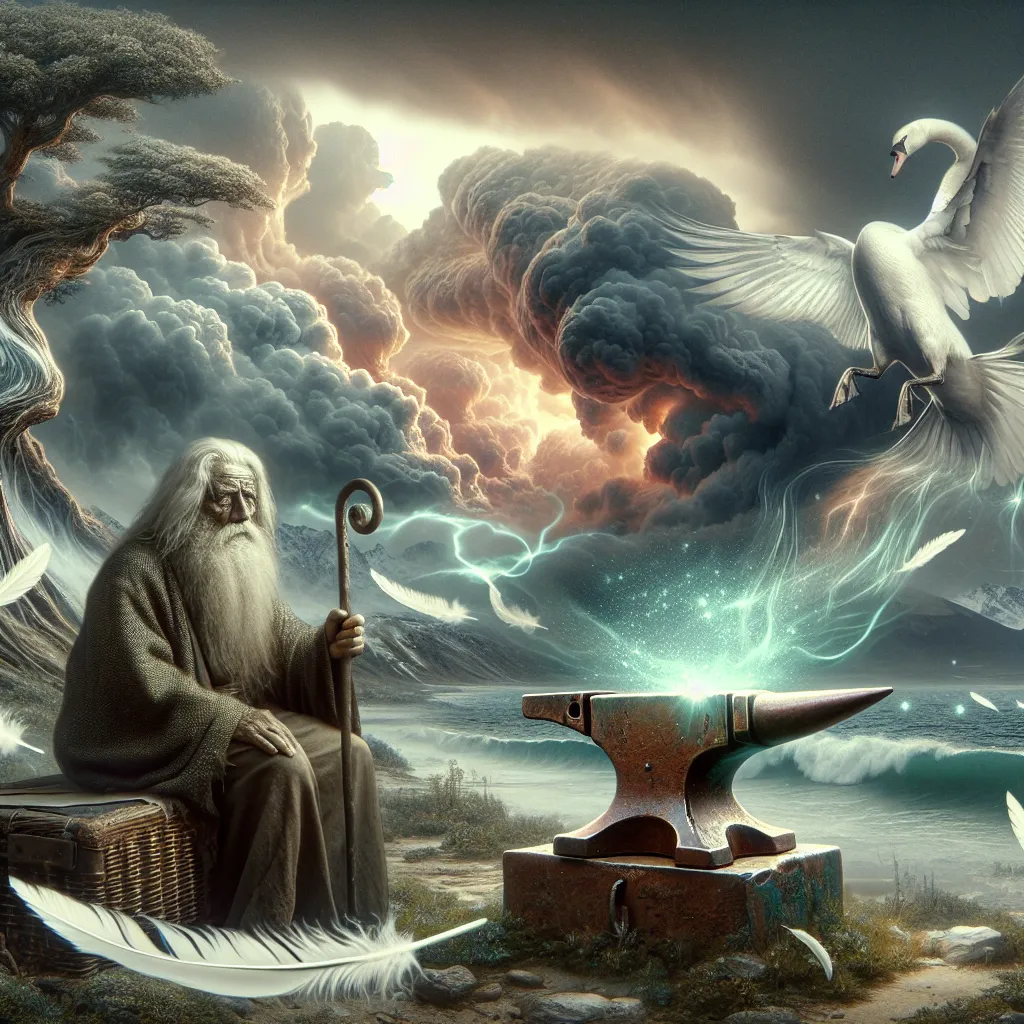After a brutal sea battle and eight days of relentless waves, Väinämöinen, a wise old bard and sage, found himself washed ashore in Pohjola. Unlike his homeland of Kalevala, Pohjola was a cold, dark place ruled by Louhi, a cunning witch. Louhi nursed Väinämöinen back to health, but she wanted a unique reward for sending him home—the Sampo, an artifact of endless wealth that didn’t yet exist.
Creating the Sampo required odd ingredients: white-swan feathers, virtuous milk, a grain of barley, and the finest wool. Väinämöinen knew only Seppo Ilmarinen, the Eternal Hammerer, could craft it. So, he convinced Louhi to let him return home to get the smith. Back in Kalevala, Ilmarinen refused to journey to the North, but Väinämöinen tricked him. He got Ilmarinen to climb a giant tree, then summoned a storm to whisk him away to Pohjola.
In Pohjola, Louhi welcomed Ilmarinen with lavish hospitality and promised her beautiful daughter’s hand in marriage if he could craft the Sampo. Ilmarinen agreed but struggled initially. His forge produced other dark artifacts—a bloodthirsty crossbow, a ruinous plow—until he called upon the winds to help. In three days, he finally created the Sampo, featuring a grain mill, a salt mill, and a money mill. Louhi locked the treasure in a mountain to keep it safe.
Years later, as Pohjola flourished, Väinämöinen and Ilmarinen remained without riches or wives. Frustrated, Väinämöinen suggested they retrieve the Sampo. With the help of Lemminkäinen, a charming troublemaker, they sailed back to Pohjola. Väinämöinen asked Louhi for half the Sampo’s profits or threatened to take it by force. Angered, Louhi prepared her army, but Väinämöinen played his magic harp, putting everyone to sleep. The trio took the Sampo and fled.
Lemminkäinen, overjoyed, insisted on celebrating. Väinämöinen warned against it, but Lemminkäinen couldn’t help himself and sang loudly, waking a crane. The crane’s cries alerted Louhi’s army, who gave chase. Väinämöinen breached their ship with a rock, but Louhi turned into a giant eagle, carrying her warriors as they attacked the heroes. She snatched the Sampo, but it slipped from her grip and shattered in the sea, sinking beyond reach.
The shards of the Sampo now lie on the ocean floor, grinding salt for the seas in the realm of Ahti, the god of water.






